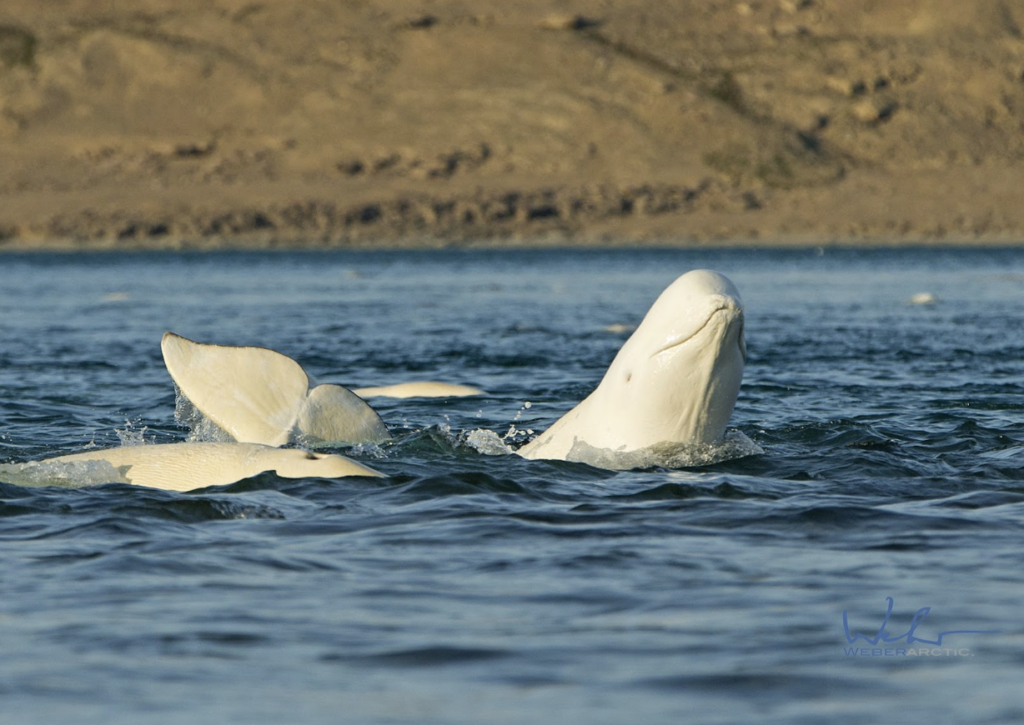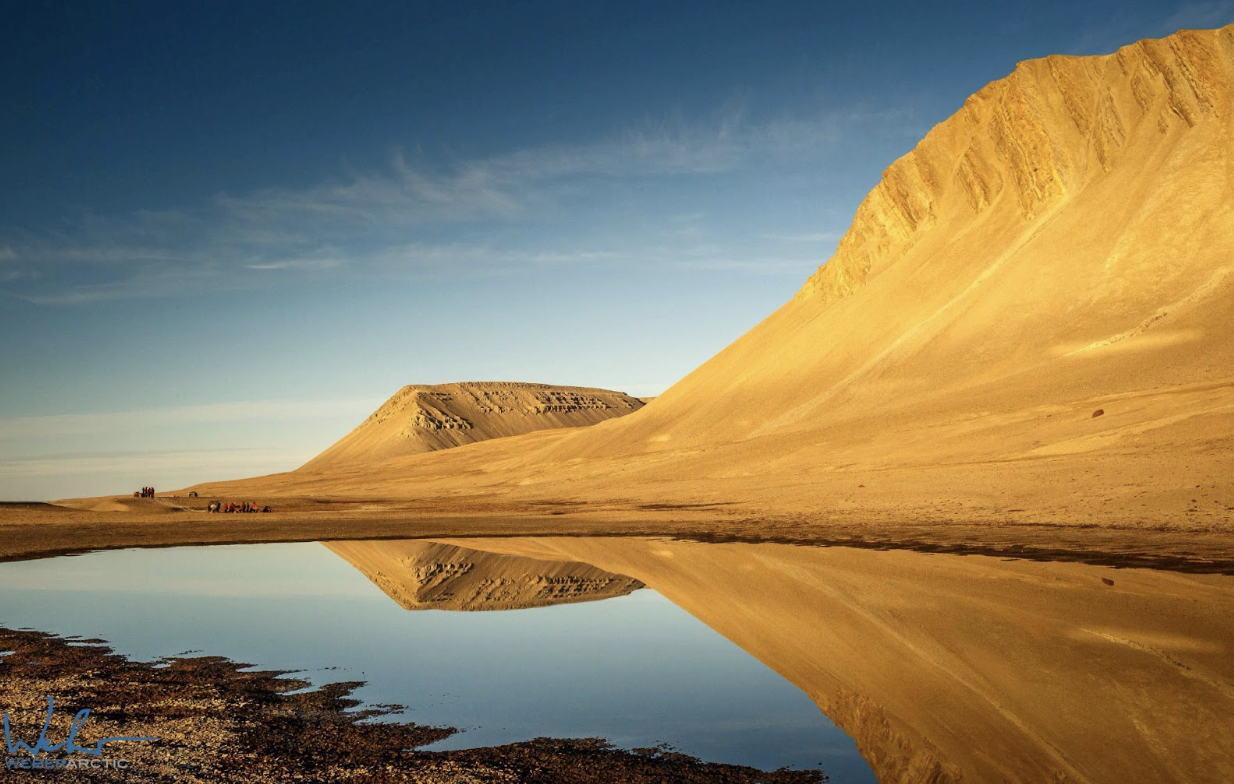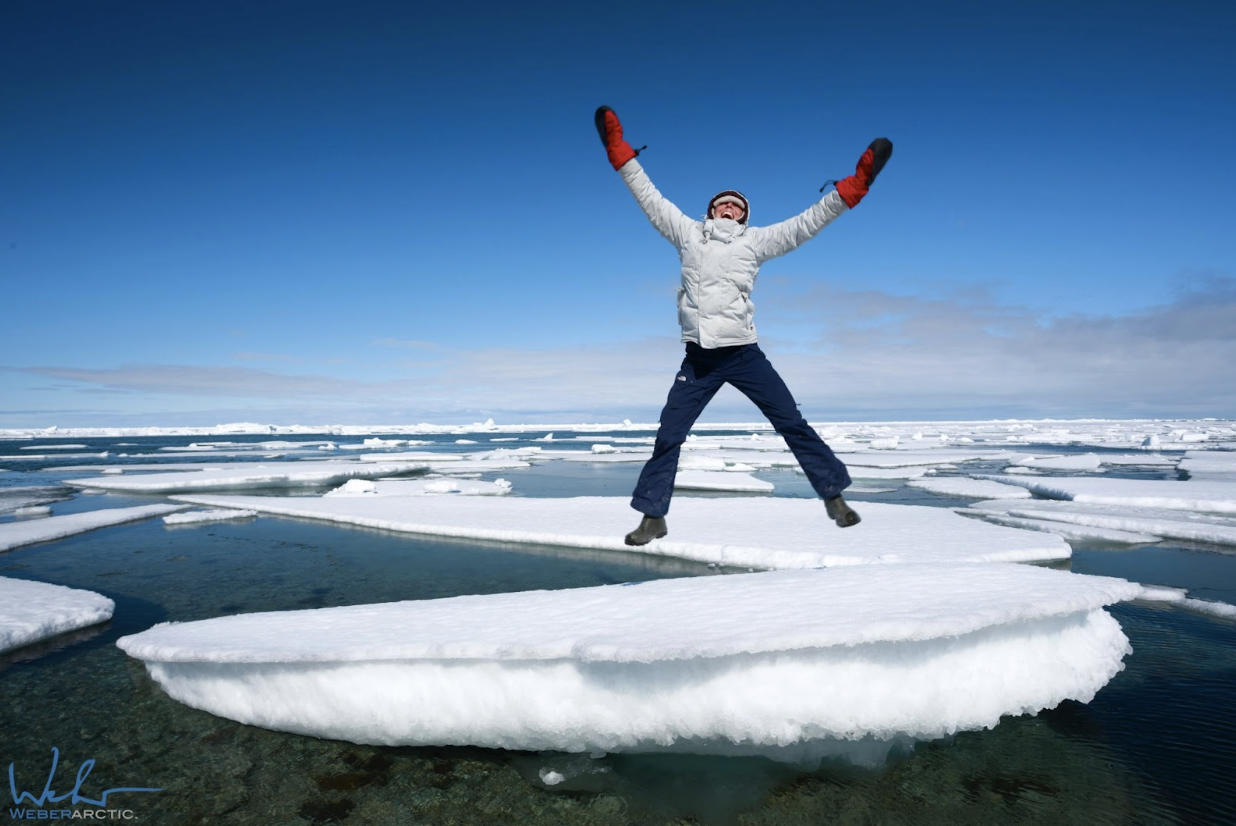
While planning and booking a big adventure is exciting, and makes us travel-happy folks greatly looking forward to jetting off….preparing for a trip can be stressful even under the best of circumstances. We’ve all been there: from fighting for the best airline tickets during peak travel season to the last-minute frenzy as you gather the last few essentials and rush out the door. (Sunglasses? Power adapters? A few extra socks from the clean laundry bin?)
But nothing compares to preparing for your first trip to the Arctic Circle. Though getting to the Arctic is a totally reasonable goal today, all the basic trip-planning questions suddenly become hard. Questions like…
- “What’s the best time of year to visit the Arctic? If I go during the winter, it’ll be super cold, but will I miss out on the full experience by going in the summer?”
- “What’s Arctic weather like? Will I be prepared to handle it and still have fun?”
- “What should I pack for an Arctic trip? Lots of warm stuff, obviously. But…what?”
By joining us on our Arctic Yoga Adventure, you have half the preparing load taken off your shoulders. We make sure to schedule our adventures at the best possible time for you to experience the best-of-the-best the Arctic has to offer! In this quick guide, we’ll answer all of these questions in depth, so you can go back to daydreaming about what it’ll be like to finally see a wild polar bear.
When’s the Best Time to Visit the Arctic Circle?
The best time to visit the high Arctic is almost always during the summer. That means we schedule our trips June to September, but most commonly July and August.
During the summer in the Arctic Circle:
- Wildlife is more active.
- You’ll experience all-day sunlight.
- Sea ice is at a low, so water activities and boat travel are possible.
It is possible to travel to certain Arctic destinations in the winter, but you’ll be faced with:
- Up to 24 hours of darkness.
- Extremely frigid temperatures.
- Fewer wildlife encounters, and challenging conditions for excursions.
Thus, a few reasons we avoid it!
There are a few cities and towns north of the Arctic Circle that are known for relatively mild winters. But if your goal is to adventure in the outdoors and see wildlife, you should definitely plan to join us in the summertime. This is when the remote outposts and wilderness lodges that offer the best Arctic experiential travel are accessible.
Because the Arctic summer is so short, conditions change quickly. Each phase of summer in the Arctic has a distinct flavor.
- In June and early July, last year’s ice hasn’t finished melting, and the midnight sun is in full effect. Animals have just become active, and migrating species are returning.
- In late July and August, wildflowers abound and ice is at a low, making way for whales and boats alike. You’ll see the most variety of wildlife during this time. It’s clear why this is peak travel season and our choice for Arctic Yoga Adventure time!
- In late August and September, winter is already returning. You can finally catch a sunset, or a southbound wildlife migration.
How Cold is the Arctic in Summer?

As you can probably imagine, summers north of the Arctic Circle aren’t very warm – they’re just less cold. Ice recedes but lingers, and snow showers still happen. But how cold is it, exactly?
The answer depends on the exact destination, but an average high of 10°C (50°F) is typical across large areas of the Arctic in July.
That doesn’t even come close to painting the full picture, though. So let’s look even closer at where you’ll stay with us…
Somerset Island, in Nunavut, Canada, is where we journey on our Arctic Yoga Adventure. At 74° North, this large island has no permanent residents; only a seasonal wilderness lodge. On the island…
- The average summer high is 12°C (54°F)
- The average summer low is 4°C (39°F)
…But temperatures as high as 25°C (77) have been recorded, as well as below-freezing temperatures.
That’s a pretty huge range, and it still doesn’t paint a full picture. Like most of the tundra, Somerset Island is exposed to wind, and weather conditions can change rapidly. You’ll experience wild temperature swings that feel like four seasons in a single day!
What to Wear in the Arctic: Packing List for Summer
When you’re packing for an Arctic trip in the summer, the key is to prepare for a variety of temperatures and conditions. Here’s part of the packing list we give our adventurers, adapted from our friends at Arctic Watch Wilderness Lodge:
Outerwear:
- Dryshod rubber boots: Also known as muck boots, these are essential for summer on the tundra, where ice-cold streams and puddles abound. Invest in a pair that reaches your knees and is comfortable for walking.
- Gortex or waterproof shell jacket: Your outermost layer offers protection from water and wind.
- Gortex or waterproof pants: Like the jacket, these protect you from the elements
- Waterproof gloves or mittens: Heavy handwear for colder days.
Layers
- Baselayer: Thin Merino wool or other moisture-wicking material. That means no cotton or silk! Bring at least two sets of tops and bottoms.
- Mid (insulating) layer: A fleece or light down jacket. Ideally, bring one of each: fleece for warmer days and down for cooler days.
- Hiking pants: Quick-drying pants to be worn over your baselayer.
- Fleece liner gloves: These can be worn with your waterproof gloves, or swapped out.
- Wool socks: Thin socks are best with your new rubber boots!
- Neck tube: Also called a neck gaiter or neck warmer, this is the savvy adventurer’s scarf alternative.
Other gear
- Light neck tube or eye mask: As you get used to sleeping through the midnight sun, use this to cut out any light that sneaks through your cabin curtains.
- Refillable water bottle: The High Arctic is one of the few places where you can drink the water. No filters needed!
- Trail shoes: For quick jaunts close to the lodge (morning jog to look for Belugas, anyone?)
- Camp shoes: Something comfortable to walk between buildings.
- Camera, lenses, and spare batteries: If you were looking for a sign to level up your photography from smartphone photos, this is it! You won’t want to miss the wildlife photo ops.
- Backpack: Something that can fit your camera, water, and the layers that’ll come on and off throughout the day.
- Swimsuit: For those brave enough to take a polar plunge!
- Sunscreen: The sun is up high all day, so protect your exposed skin – especially your face and lips.
- Comfortable clothes: For relaxing at the lodge after a long day.
Essential Tips for Comfortable Arctic Travel

Notice a few themes running through that list? Yup, there are definitely some overarching rules that determine what you should (and shouldn’t) pack for an Arctic trip. When in doubt, remember this:
Focus on staying dry.
You can’t stay warm without staying dry. With all that melting ice, you’ll have plenty of chances to get wet on the tundra – not to mention that you’ll probably work up a sweat!
The materials listed on the packing list are just as important as the items themselves. Merino wool and polypropylene are moisture-wicking and great for base layers. Mid-layers and shells should be breathable. Gore-Tex is the gold standard material for your shell layer: it’s magically both weather-proof and breathable.
And again, your knee-high rubber boots might just be your most important piece of gear. “Waterproof” hiking boots won’t cut it when you’re wading through an Arctic stream!
Layers, layers, layers.
Between the weather changes and the heat your body produces as you hike, bike, or paddle, no single outfit will keep you comfortable all day in the Arctic.
That’s why layering is your best friend; you’ll take things on and off and stay comfortable all day. Make sure you try on all your layers together at home to make sure everything fits comfortably.
Respect the sun.
Without heat, it can be easy to forget how strong the Arctic sun is. Avoid going home with a cherry red face (and pale from the neck down!) by packing sunscreen and lip balm with SPF 30, minimum.
Also, make sure your sunglasses have UV protection. You’ll be around water (and sometimes snow), adding reflected sunlight to already-bright days.
Keep baggage limits in mind.
It’s important to pack enough layers, but be strategic. You’ll be traveling by plane, and Arctic charter flights have strict baggage weight requirements. The included charter flight to Arctic Watch on our adventure limits each passenger to 50 lbs of total baggage.
Arctic Adventure with a Dose of Wellness
Already mentally packing your bag? We don’t blame you. Aside from buying a few pieces of specialty clothing, preparing for a summer trip to the Arctic is more manageable than it might seem!
The hard part is finding the Arctic adventure itinerary that’s perfect for you. You’re probably not planning to journey to the roof of the world many times in your life, so it’s important to make the most of it!
If you’re someone who…
- Balances wellness with cultural immersion when you travel (you like to break out your yoga mat, but not lock yourself away on a traditional yoga retreat).
- Delights in a wide variety of adventurous activities (SUPing along the Northwest Passage, e-biking on the tundra, and scouting for belugas, polar bears, and whales sounds like the perfect itinerary).
- Believes that travel is best when shared (you surround yourself with like-minded souls, and enjoy bonding over the dinner table as you sample new cuisine).
- Prioritizes low-impact travel (you’re only interested in sustainable Arctic trips – you have no intention of adding to existing environmental trouble!)
…then ourArctic Yoga Adventure was designed just for you.
Learn more about the adventure.
Start breaking in those muck boots. Awe and wonder await you in the Arctic.

